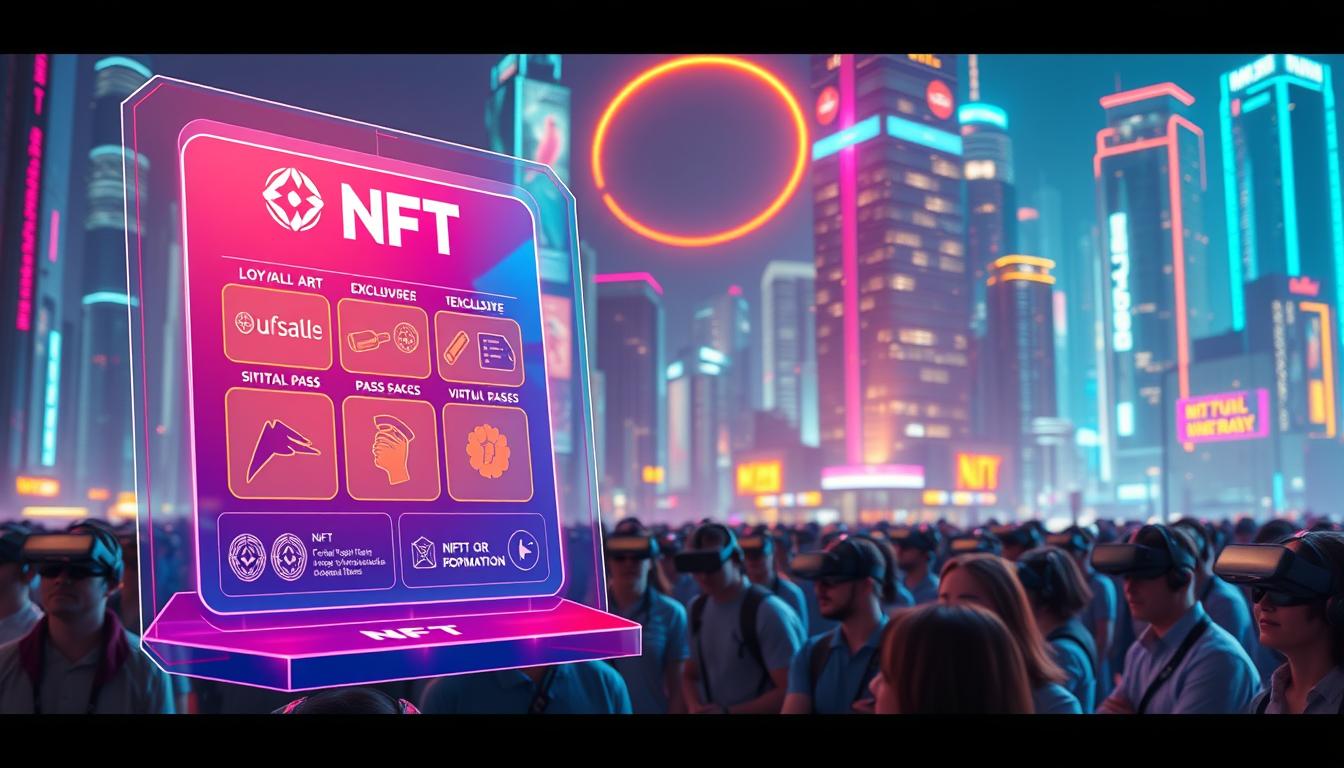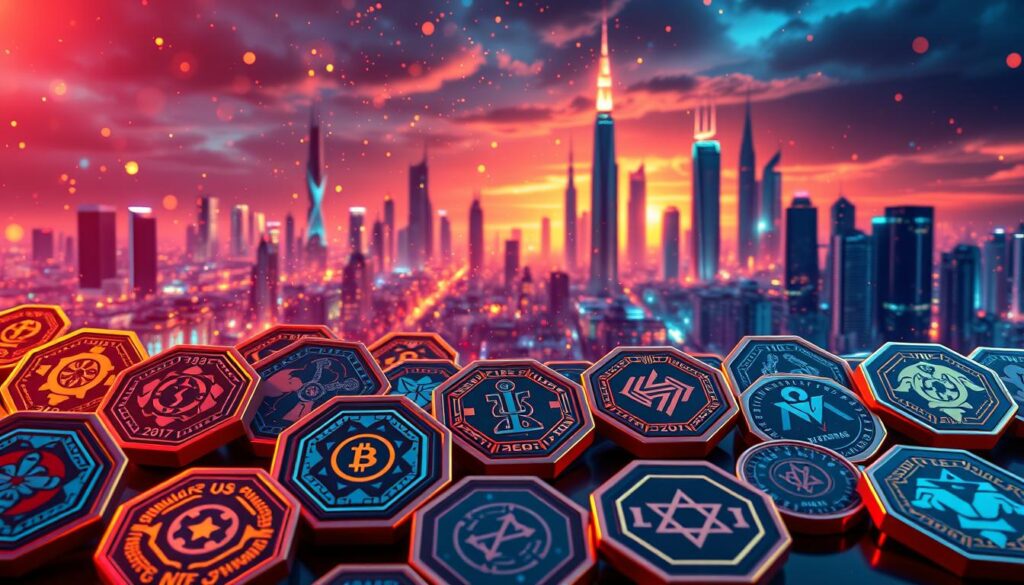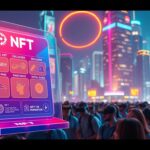Now Reading: Earn with NFTs: How to Get NFT Rewards for Brand Loyalty
- 01
Earn with NFTs: How to Get NFT Rewards for Brand Loyalty
Earn with NFTs: How to Get NFT Rewards for Brand Loyalty

Customer engagement is changing. Traditional points systems are giving way to more dynamic digital strategies. Non-Fungible Tokens (NFTs) are at the forefront of this shift.
This digital transformation offers a new approach to customer retention. Unique blockchain-based tokens replace conventional rewards. They provide customers with true ownership of their digital assets.
Modern consumers, especially younger audiences, value digital collectibles. These items offer both tangible value and social status within a community. Brands across various industries are adopting this technology.
From fashion to food and beverage, companies are building stronger emotional connections. This guide explores the process of implementing and participating in these innovative programs.
Readers will discover benefits that go beyond standard loyalty points. These advantages include personalization, exclusivity, and potential long-term value.
Key Takeaways
- NFTs are revolutionizing traditional customer retention strategies.
- Blockchain technology provides true ownership of digital rewards.
- Digital collectibles attract younger demographics seeking unique experiences.
- These programs create stronger emotional bonds between companies and customers.
- Benefits extend beyond standard points, offering exclusivity and potential value growth.
- Various industries are successfully implementing these digital loyalty solutions.
Introduction to NFT Rewards and Brand Loyalty
Modern marketing approaches leverage unique digital tokens to enhance customer relationships. These innovative systems create deeper connections between companies and their audience.
What Are NFTs and Their Unique Attributes
Non-fungible tokens represent distinctive digital assets on blockchain networks. Each token contains specific information that makes it one-of-a-kind. This technology prevents duplication and ensures authenticity.
The blockchain ledger maintains up-to-date, unalterable records. Multiple computers validate every transaction for security. This system offers greater protection than traditional certification methods.
The Importance of Innovative Loyalty Programs
Traditional points systems often lack personalization and emotional connection. Many current programs rely on generic rewards that customers find uninspiring.
Forward-thinking companies now use digital collectibles to modernize their approach. These assets carry both functional utility and collectible value. They appeal to consumers seeking unique experiences.
Businesses can differentiate themselves in competitive markets. They offer digital items that people can truly own and trade. This creates stronger bonds between brands and their most dedicated customers.
The Evolution of NFT Loyalty Programs: Digital Transformation in Marketing
The landscape of customer retention is undergoing a significant digital makeover. Traditional points systems are being replaced by more engaging and personalized approaches. This shift reflects changing consumer expectations and technological advancements.

Industry projections show loyalty programs growing at 10.5% annually through 2030. This growth signals increased recognition of retention’s importance. Companies now seek solutions beyond basic discount structures.
From Traditional Points to Digital Collectibles
Early programs used physical punch cards that evolved into digital points. These systems offered fungible rewards that lacked personal connection. The current transformation introduces unique digital assets with true ownership.
Modern programs take several innovative forms. Points-based systems create tokens containing purchase history data. Paid programs provide exclusive benefits that grow over time.
Value-driven approaches connect rewards to social causes. Tiered systems use tokens to represent membership levels. Each format offers greater flexibility and personalization than traditional methods.
This evolution represents a paradigm shift in marketing strategy. Digital collectibles create stronger emotional bonds between companies and their audience. They transform routine transactions into meaningful experiences.
Understanding Blockchain and Its Role in NFT Rewards
The foundation of any successful NFT-based loyalty system rests on blockchain’s robust architecture. This distributed ledger technology creates an unchangeable record of every transaction and ownership detail.

Multiple computers across the network validate each action anonymously. This process ensures complete transparency throughout the entire NFT loyalty program.
Security, Transparency, and Authenticity
Blockchain provides unmatched security features for digital assets. Each token contains a unique identifier that prevents duplication.
The system maintains accurate, up-to-date ownership records. No single entity can alter transaction history without network consensus.
Smart contracts automate reward distribution when customers meet specific conditions. This eliminates manual processing while ensuring fairness.
Environmental and Scalability Considerations
Some blockchain networks face significant energy consumption challenges. Ethereum’s annual usage equals Chile’s total energy output.
Brands must consider sustainability when selecting their platform. Emerging alternatives like Polygon and Solana offer more efficient solutions.
Transaction speed and cost vary across different networks. Scalability remains crucial for programs serving large customer bases.
Practical Insights on Enjoying NFT Loyalty Benefits
Digital collectibles are reshaping customer-brand interactions through practical advantages. These systems provide immediate visibility into earned benefits through real-time blockchain updates.
Participants enjoy unique incentives that differ from mass-produced offerings. Each token’s rarity creates perceived value that encourages ongoing participation.

The interoperability of these systems allows seamless use across multiple platforms. Blockchain technology eliminates third-party intermediaries, creating unified networks.
Businesses appreciate the cost-effectiveness of digital token creation. This approach requires minimal investment compared to physical reward systems.
Younger demographics particularly embrace these digital experiences. Over 57% of Generation Z express greater comfort in virtual environments.
Millennials show strong engagement potential with digital assets. This demographic demonstrates significant interest in token trading activities.
Utility tokens provide holders with tangible benefits beyond collectible value. These include early product access, exclusive discounts, and special event invitations.
Enhanced security through blockchain’s immutable records ensures smooth redemption processes. Each token’s authentication prevents duplicate claims effectively.
These programs contribute to sustained brand growth by meeting modern expectations. They build devoted communities through innovative, digitally-native experiences.
The customer experience improves significantly with functional yet collectible tokens. This combination creates emotional connections beyond transactional relationships.
How to Get NFT Rewards for Brand Loyalty
Companies launching token-based retention systems must navigate both technical and creative considerations. The process involves distinct phases that ensure successful deployment and customer adoption.

Implementation begins with strategic planning across four critical areas. Each phase contributes to building a robust digital collectibles initiative.
Step-by-Step Process for Implementation
The development journey starts with designing unique digital assets. These creations should reflect company identity while resonating with target audiences.
Platform selection follows design completion. Businesses evaluate blockchain networks based on transaction costs, scalability, and environmental impact.
| Implementation Phase | Key Activities | Expected Outcome |
|---|---|---|
| Design Development | Create distinctive digital artwork and assets | Visually appealing tokens that represent brand values |
| Platform Evaluation | Assess blockchain networks and marketplace options | Selected infrastructure supporting program requirements |
| Smart Contract Setup | Program token properties and benefit mechanisms | Automated reward distribution and functionality |
| Testing Protocol | Verify minting process and customer experience | Flawless launch with smooth participant onboarding |
Engaging Customers with Personalized NFTs
Personalization transforms standard digital collectibles into meaningful connections. Incorporating individual purchase histories and preferences creates unique value propositions.
Storytelling elements further enhance token appeal. Each digital asset can represent chapters in larger brand narratives. This approach encourages continued participation to complete collections.
Community features enable interaction among participants. Dedicated forums and social groups facilitate experience sharing and feedback exchange. These spaces strengthen bonds between companies and their supporters.
Layered and Tiered Reward Systems with NFTs
Tiered structures create clear pathways for customer advancement in digital loyalty initiatives. These systems establish recognizable achievement levels that motivate ongoing participation.
Progressive frameworks typically feature bronze, silver, and gold levels. Each tier corresponds directly to engagement intensity and duration.
Developing Bronze, Silver, and Gold Tiers
Entry-level bronze tokens introduce new members to basic program benefits. These initial offerings include modest discounts and early sale access.
Intermediate silver status provides substantially enhanced value. Holders gain access to limited-edition items and special event invitations.
Gold tier represents the pinnacle of customer dedication. These premium tokens unlock personalized experiences and exclusive privileges.
Utilizing Membership Tokens for Evolving Rewards
Dynamic membership tokens adapt based on individual behaviors. They create personalized experiences that grow with customer interactions.
Token evolution manifests through changing artwork and updated benefits. Frequent purchasers see their digital assets reflect their preferences.
This adaptability creates highly targeted reward experiences that feel uniquely personal. The system maintains engagement through continuous relevance.
Integrating NFTs Across Business Platforms
Cross-platform integration represents the next evolutionary stage for digital loyalty initiatives. These systems gain significant value when tokens function across multiple digital environments.
Gaming connections allow members to use digital assets as in-game items or characters. This creates immersive experiences that blend entertainment with brand engagement.
Social Media, E-commerce, and Virtual Reality
Social platforms transform tokens into shareable status symbols. Members display these assets on profiles, unlocking special features that encourage organic promotion.
E-commerce integration provides practical utility through exclusive discounts. Holders gain early access to new products and special purchasing privileges.
Virtual reality connections offer exclusive digital spaces and events. These experiences appeal to tech-savvy consumers interested in metaverse exploration.
Partnering with NFT Marketplaces
Established marketplaces like OpenSea provide immediate access to large user bases. Their multi-chain support simplifies technical distribution challenges.
Platforms like Rarible offer decentralized governance and customizable storefronts. This gives brands greater control over their digital asset presentation.
Selection criteria should include blockchain compatibility and transaction fees. The chosen platform must align with brand objectives and customer preferences.
Leveraging Exclusivity Through Token-Gating and Membership Perks
Digital scarcity creates powerful psychological incentives that drive deeper customer engagement. This approach transforms standard digital assets into coveted status symbols.
Token-gating technology restricts content and features to specific digital token holders. This mechanism creates exclusive access barriers that elevate the customer experience.
Creating Scarce, High-Value Rewards
Limited edition runs maintain perceived value among program participants. Each digital collectible should feature unique designs that cannot be replicated.
Tiered systems provide differentiated benefits based on membership level. Higher-tier holders receive immediate access while others follow in sequence.
Premium perks include early product launches and special event invitations. These privileges create a sense of belonging that strengthens emotional connections.
| Membership Level | Access Timing | Exclusive Benefits |
|---|---|---|
| Gold Tier | Immediate Access | Private sales, VIP events, personalized service |
| Silver Tier | 24-Hour Delay | Early product launches, special discounts |
| Bronze Tier | 48-Hour Delay | Basic early access, standard member perks |
The value proposition must justify the effort required to obtain these digital assets. Brands balance exclusivity with accessibility to maintain broad appeal.
Community recognition becomes a significant motivator for participants. Visible token ownership demonstrates status within the brand ecosystem.
Enhancing Customer Experience with NFT Art and Digital Collectibles
Visual storytelling through digital art creates powerful emotional connections with modern audiences. This approach moves beyond simple transactions to build lasting relationships.
Creative content transforms standard programs into memorable journeys. Customers value these unique digital assets for their aesthetic appeal and personal significance.
Using Crypto Art to Spark Engagement
Crypto art includes diverse media from established artists and exclusive brand content. Unreleased music, movie clips, and sports highlights all serve as compelling collectibles.
Major companies successfully integrate this creative approach. Clinique ran a social media contest where members shared stories to win color-changing tokens.
Starbucks Odyssey rewards members with collectible “stamps” for completing activities. These stamps offer bonus points and unlock exclusive event access.
The creation process is straightforward for businesses. Uploading digital media to a marketplace with a small fee makes this strategy accessible.
| Art Content Type | Engagement Potential | Brand Example |
|---|---|---|
| Original Digital Artwork | High aesthetic and collectible value | Estée Lauder, Hugo Boss |
| Exclusive Music & Video | Creates buzz and exclusivity | Clinique Smart Rewards |
| Branded Activity Stamps | Drives participation and gamification | Starbucks Odyssey |
Limited editions generate excitement through scarcity. This encourages rapid participation and creates vibrant secondary trading markets.
These visual collectibles build strong community bonds. Members connect to discuss their pieces and share appreciation.
Customizable art series tell evolving brand stories. They maintain fresh content that sustains long-term customer engagement.
Overcoming Challenges and Embracing Technology Advances in NFT Loyalty
The path to effective digital loyalty solutions involves overcoming significant operational and environmental obstacles. Companies must address both technical limitations and sustainability concerns to build successful initiatives.
Platform selection becomes critical for managing expenses and performance. Ethereum offers strong security but faces congestion issues and fluctuating gas fees.
Managing Transaction Costs and Scalability
Transaction expenses present real challenges for digital collectible initiatives. High network fees can make small reward distributions economically impractical.
Scalability problems affect the user experience when systems cannot handle high volumes. Alternatives like Polygon and Solana provide faster processing times with lower costs.
Balancing Innovation with Sustainability
Environmental impact creates reputational risks for businesses. Ethereum’s energy consumption rivals entire countries, raising sustainability questions.
Customer sentiment strongly favors environmentally conscious companies. Over 70% expect brands to support environmental causes in their operations.
Technology advances continue improving blockchain efficiency. Emerging systems like proof-of-stake require dramatically less energy than older methods.
Conclusion
The digital transformation of customer retention strategies has reached a pivotal moment with blockchain-based initiatives. These innovative approaches create deeper emotional connections between companies and their audience.
Successful programs deliver genuine value through exclusive access, personalized experiences, and true digital ownership. Companies like Starbucks and Clinique demonstrate practical applications that resonate with modern consumers.
As technology advances, businesses that build effective digital loyalty programs will gain lasting competitive advantages. The future lies in balancing innovation with timeless customer satisfaction principles.
FAQ
What is an NFT loyalty program?
An NFT loyalty program uses blockchain-based digital assets as incentives for customer engagement. Instead of traditional points, members earn unique tokens that can unlock exclusive perks, products, or experiences, adding tangible value to their relationship with a brand.
How do customers benefit from these programs?
Participants gain access to special events, receive early product releases, and enjoy unique discounts. These digital collectibles can also appreciate in value, offering long-term benefits beyond standard reward systems and fostering a stronger sense of community.
Are NFT rewards difficult for users to manage?
Modern platforms are designed for simplicity. Brands like Starbucks use intuitive apps where digital assets integrate seamlessly. Users typically need a digital wallet, but the process is becoming as straightforward as managing a traditional loyalty account.
What makes these programs different from standard ones?
The key difference is exclusivity and true ownership. Unlike standard points, these tokens are unique digital assets on a blockchain. This technology provides transparency and security, allowing for verifiable ownership and creating scarce, high-value rewards.
Can these tokens be used across different platforms?
Yes, interoperability is a major advantage. A token earned from one brand could potentially grant access to perks on a partner’s e-commerce site or within a virtual reality experience, creating a connected ecosystem of benefits for the holder.
How do brands ensure the technology is sustainable?
Many companies now choose energy-efficient blockchain networks. Brands are actively balancing innovation with environmental responsibility by selecting platforms with lower carbon footprints to address scalability and sustainability concerns.















